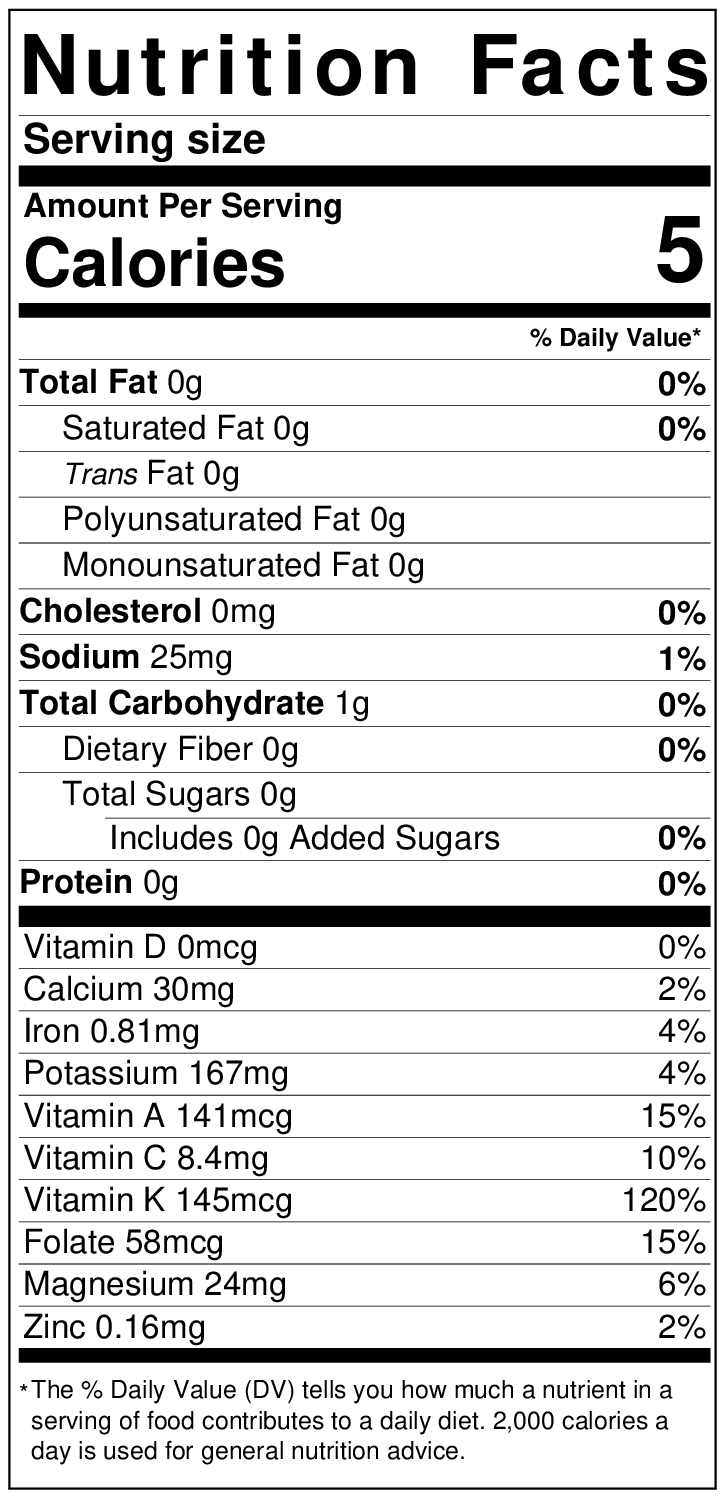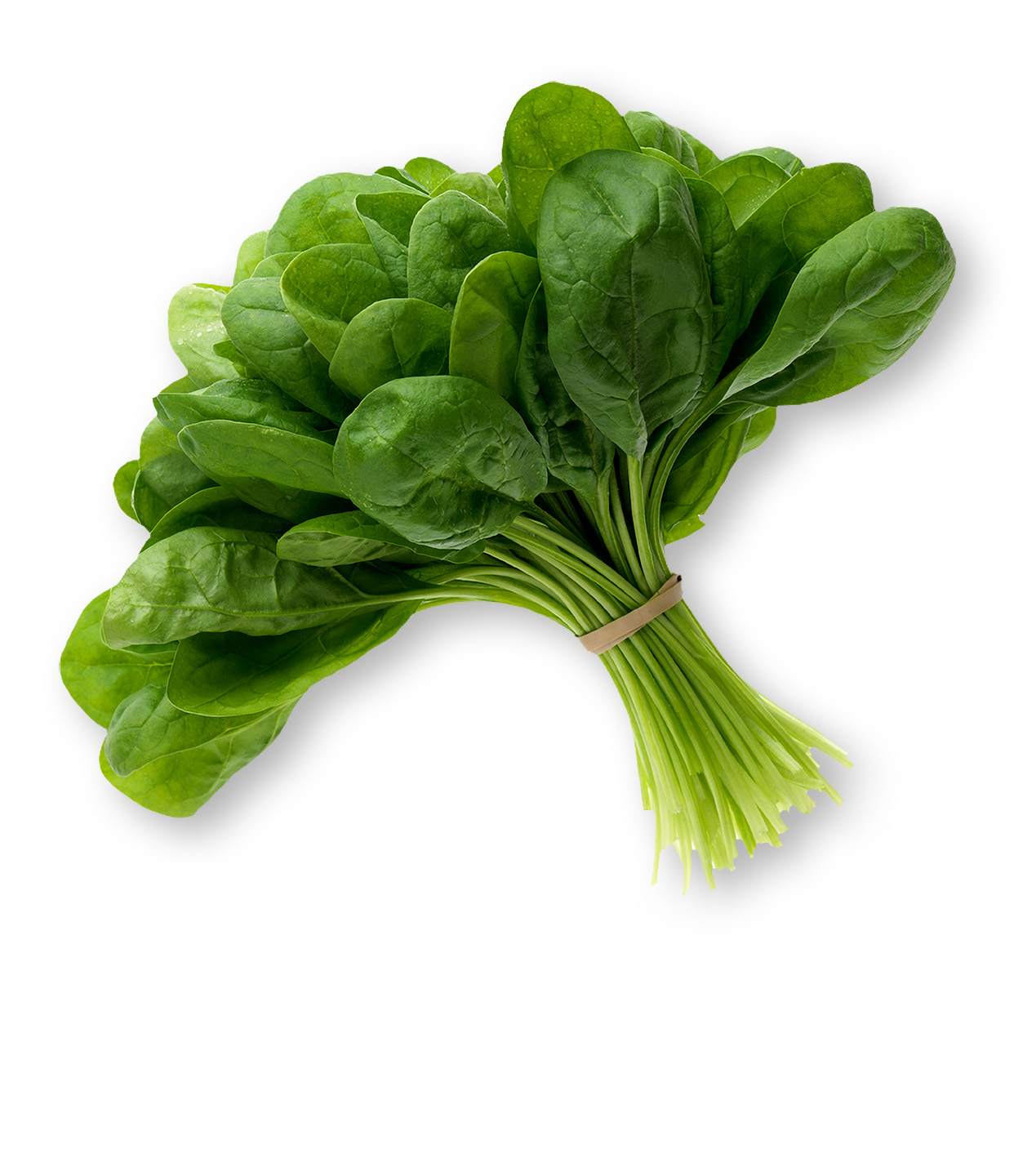
Spinach
SENSORY PROFILE:
Popeye wasn’t wrong. Spinach is well known for its impressive nutrient content that will work to help to strengthen you and your immune system. Spinach leaves are sweet and tender when harvested early. Larger, more mature leaves are less tender but will still be sweet and mild. Not technically a lettuce, spinach is a member of the amaranth family and is more closely related to beets and <a href=”https://lettuceinfo.org/products/chard/”>chard</a>. Spinach is very versatile and can be cooked, added to many dishes or eaten raw.
SIMILAR GREENS:
Baby Greens (Baby Kale, Baby Greenleaf/Redleaf, etc.)
Bibb Lettuce + Baby Kale
Massaged Kale
Experiencing Spinach:
Spinach is a nutrient dense super-green that can vary in texture and flavor based on maturity.
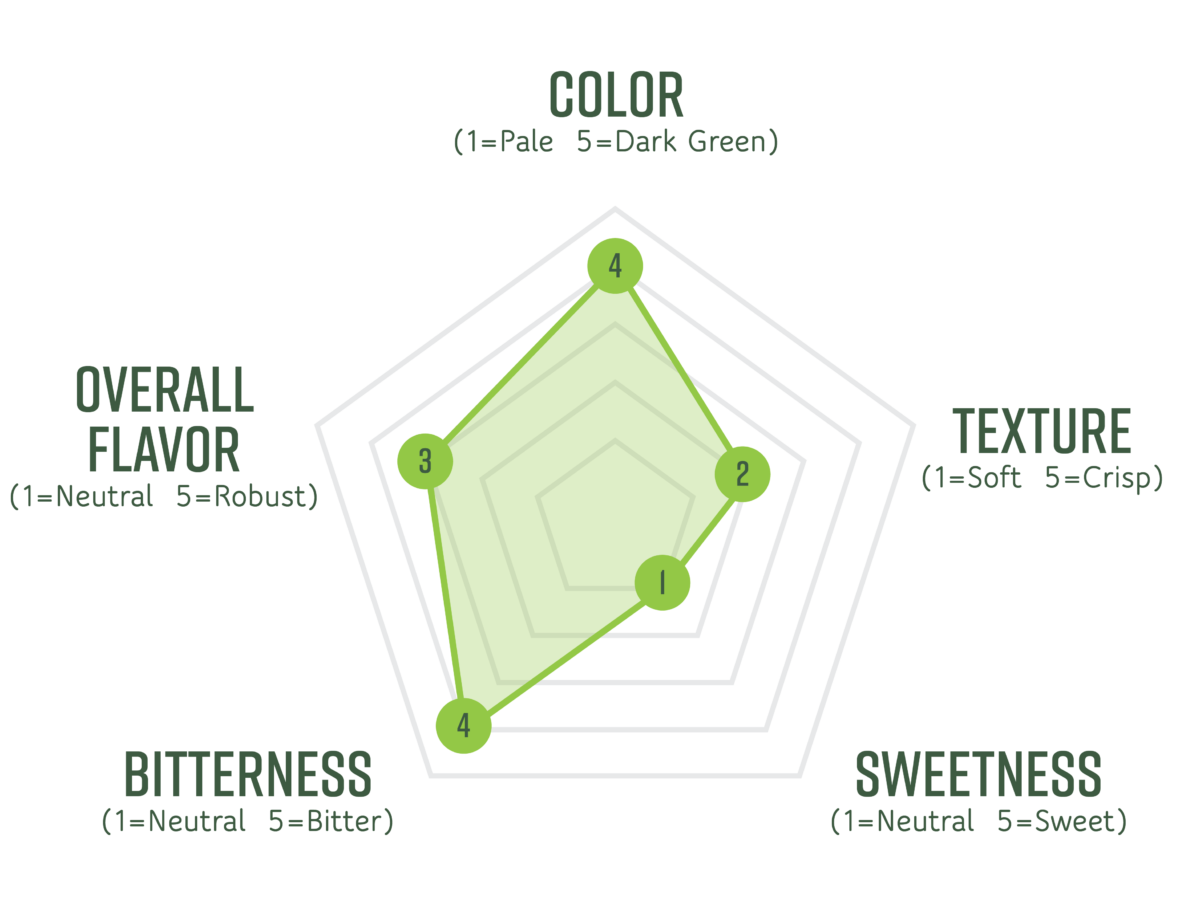
Pro Tip: We eat with our eyes first and color is an important visual cue to consider with using leafy greens. Using a variety of colors not only expands the range of phytochemicals in your dish, but also makes it more visually appealing.
Pro Tip: if you are looking to mellow the bitterness in leafy greens, explore blanching or light cooking of the leafy greens to mute bitter notes.
Color
Spinach delivers a 4 out of 5 for color as a brilliant emerald green.
Texture
Spinach delivers a 2 out of 5 for texture but can be more tender the less mature it is harvested and more firm as it becomes more mature. As the leaf matures, the stem can become more fibrous.
Overall Flavor
Spinach delivers a 3 out of 5 for flavor with a tendency to being more bitter than sweet.
Spinach Nutrition Facts
- Spinach provides an:
- Excellent source of vitamin K
- Good source of folate and vitamin A
- Vitamin C, iron, magnesium, lutein and zeaxanthin
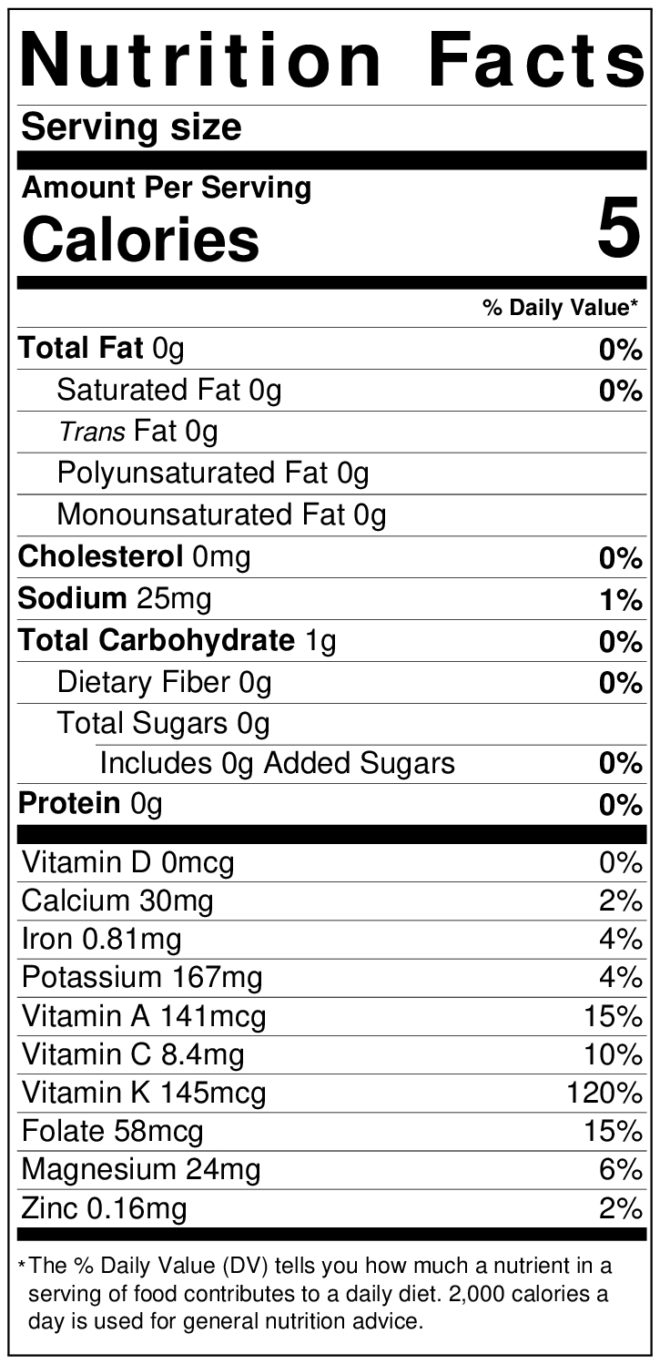
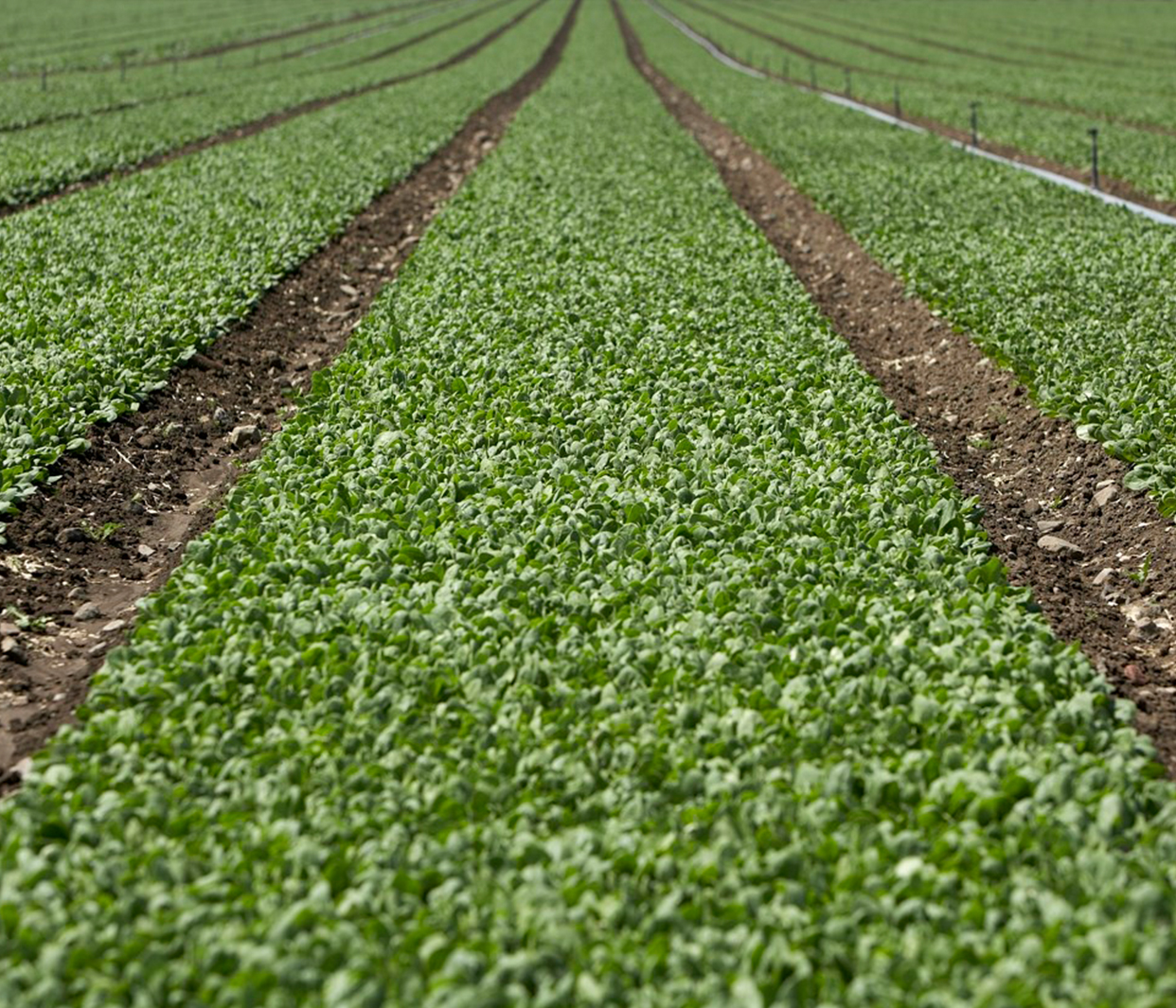
Growing Information
California is the leading producer of spinach in the U.S. with over 44,000 acres planted in the state and production topping 300,000 tons per year. Spinach can be ready to harvest as early as 21 days after seeds are planted, when it is referred to as “baby spinach” or as long as 90 days if it will be processed and frozen. Spinach that is sold in bulk is typically hand-harvested, gathered into bunches and packed into a carton in the field. Meanwhile, most packaged spinach is mechanically-harvested, placed into a tote in the field. From here it ships to a processor where it may be packed into bags or clamshell containers either alone or as part of a salad mix. One planting of spinach is harvested multiple times, particularly if it is hand-harvested and sold in bulk.
Usage Ideas
The mild taste and tender leaves of spinach makes it extremely versatile either fresh or cooked.
 Easy Sautéed Spinach
Easy Sautéed Spinach
Frequently Asked Questions
Spinach is high in fiber as well as key vitamins and minerals the body needs to function normally. Learn more about spinach nutrition here.
For most people it is perfectly fine to eat spinach every day in moderate amounts. However, there are some circumstances in which certain people should not eat spinach. Learn more here.
Like anything, eating too much of a good thing can be bad. However, for most people a moderate amount of spinach is a healthy addition to the diet. Learn more here.
While eating spinach in any form has proven health benefits, Studies show that cooked spinach may actually be slightly better for you. Learn why here.
Yes, dogs can eat spinach. Just like it does for humans, spinach provides dogs with a variety of good for Fido nutrients that can benefit their overall health. However, keep in mind that spinach should be given to dogs in moderation. Learn more here.
Stay in the Know About Lettuce
Sign up for Health & Safety Alerts
Get the facts about lettuce and why it’s one of the safest and healthiest foods we can eat.

